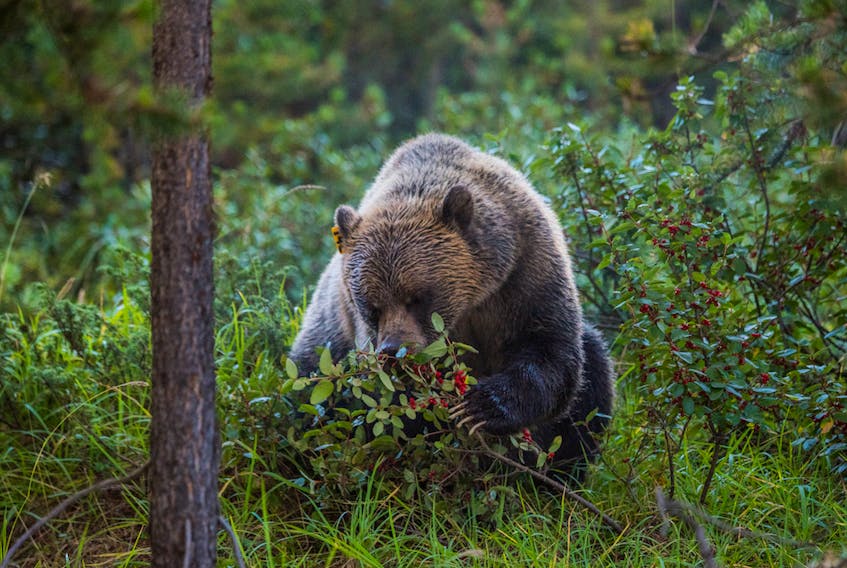Alberta’s grizzly bears could be headed towards increased interactions and conflicts with humans as one of their staple food sources may soon be off the menu due to climate change.
In a new study from the University of Calgary, published in the journal Nature Climate Change, Dr. Greg McDermid and Dr. David Laskin looked at the links between rising global temperatures and the fruiting of buffaloberries, which make up a large portion of a grizzly bears’ pre-hibernation feast.
McDermid found that by 2080 the berries will begin ripening about three weeks earlier than they currently do, changing the bears’ “very food focused” behaviours.
“We can expect to see them at times and in places where we’re not used to seeing them. I think it could be argued that we’re already witnessing that,” McDermid said in a statement.
The study used satellites to monitor the temperature beneath the forest canopy in the Rockies, tracking the speed buffaloberry plants are moving from the flowering to fruiting stages of their lifecycle.
McDermid said the plant needs a certain amount of heat to proceed from one “phenological stage” to the next, like from flowering from fruiting.
The change in the berries’ peak fruiting season will leave the bruins with less time to forage for their “most important caloric food source” before hibernation, Laskin said, leading bears “into places where they wouldn’t normally go” and “places where they might get themselves into trouble.”

Kim Titchener, a human-wildlife conflict expert and founder of Bear Safety & More, said the berries peak in mid-July, adding between 80 to 90 per cent of an Albertan grizzly’s diet is vegetation.
And while the early fruiting season could be good news for bears waking up early from hibernation, it might also mean an increase in human-grizzly interactions out on trails or work sites in bear country.
“There is a relationship between when berries are out and people having encounters with bears … the conflict season may adjust a little earlier,” Titchener said.
There may also be a corresponding drop in the bear population in the if the animals are unable to compensate for their dietary shift as a sow grizzly “will not become pregnant until the y hit 20 per cent body fat.”
Parks Canada will routinely close trails or campgrounds in Alberta to clear the bear-attracting berry bushes as a precaution or when bears are sighted near areas frequented by humans.
In recent years, bears near Canmore and Banff feasting on fruit trees in the towns have been a concern — including several bears that had to be killed or relocated — as they have started to rely on fruit trees as source of food.
“Either animals adapt or die. It’s a sad thing that we’re having to face in conservation,” Titchener said. “Some species are adaptive and will figure it out, but some won’t.”
On Twitter: @RCRumbolt
Copyright Postmedia Network Inc., 2019









